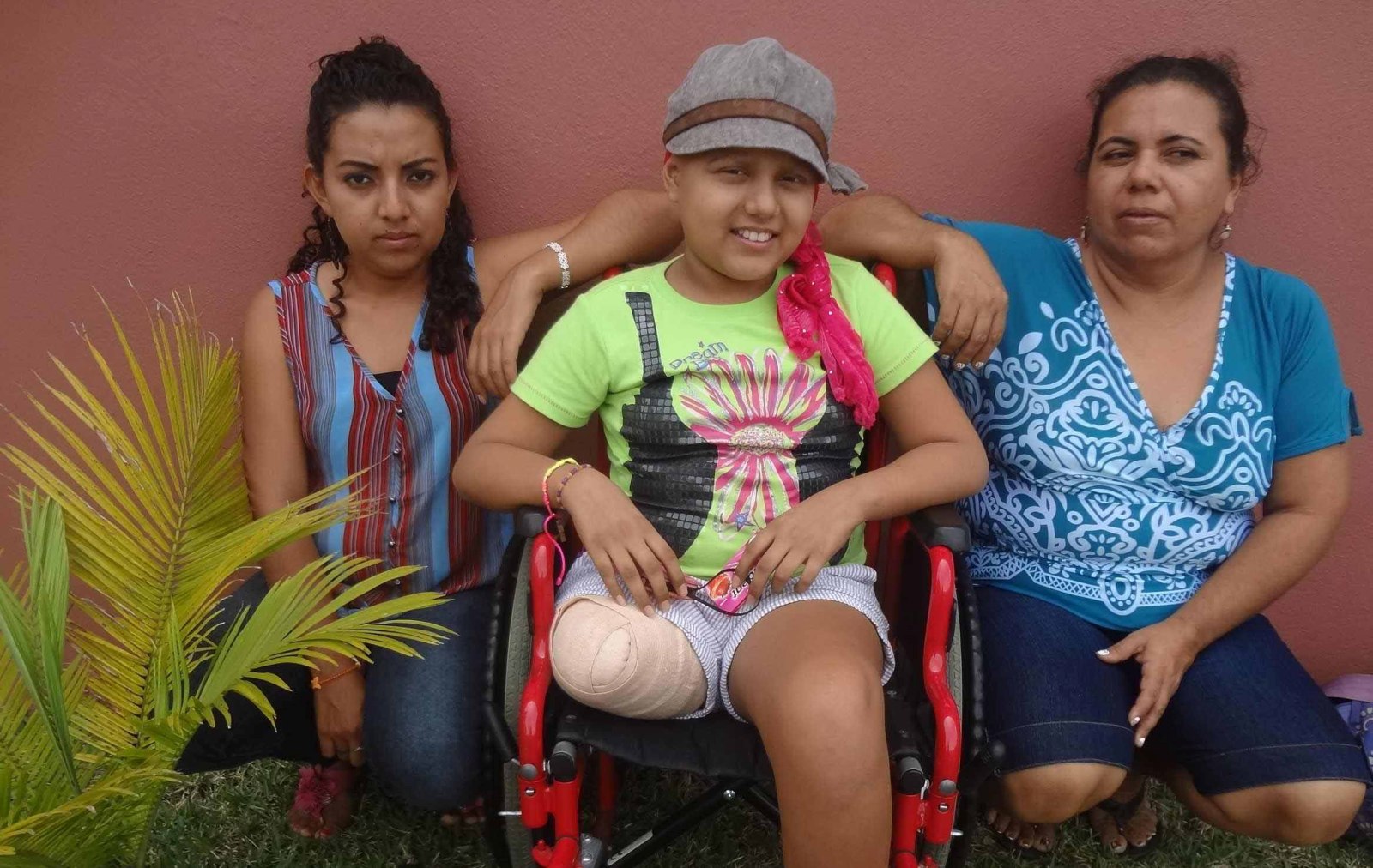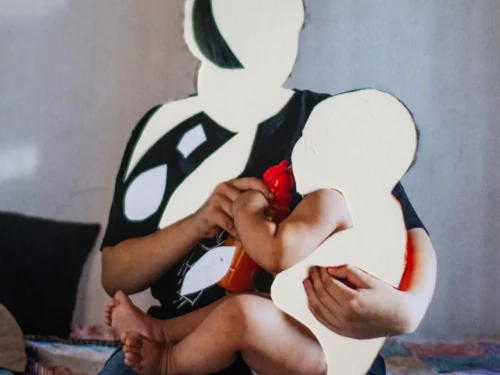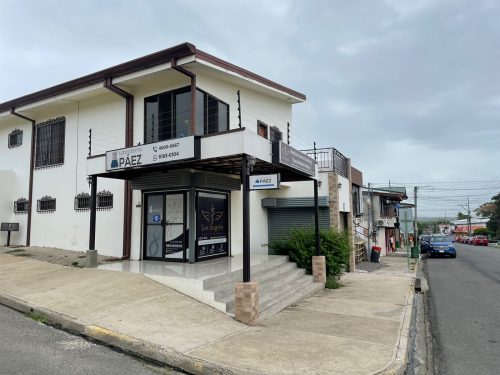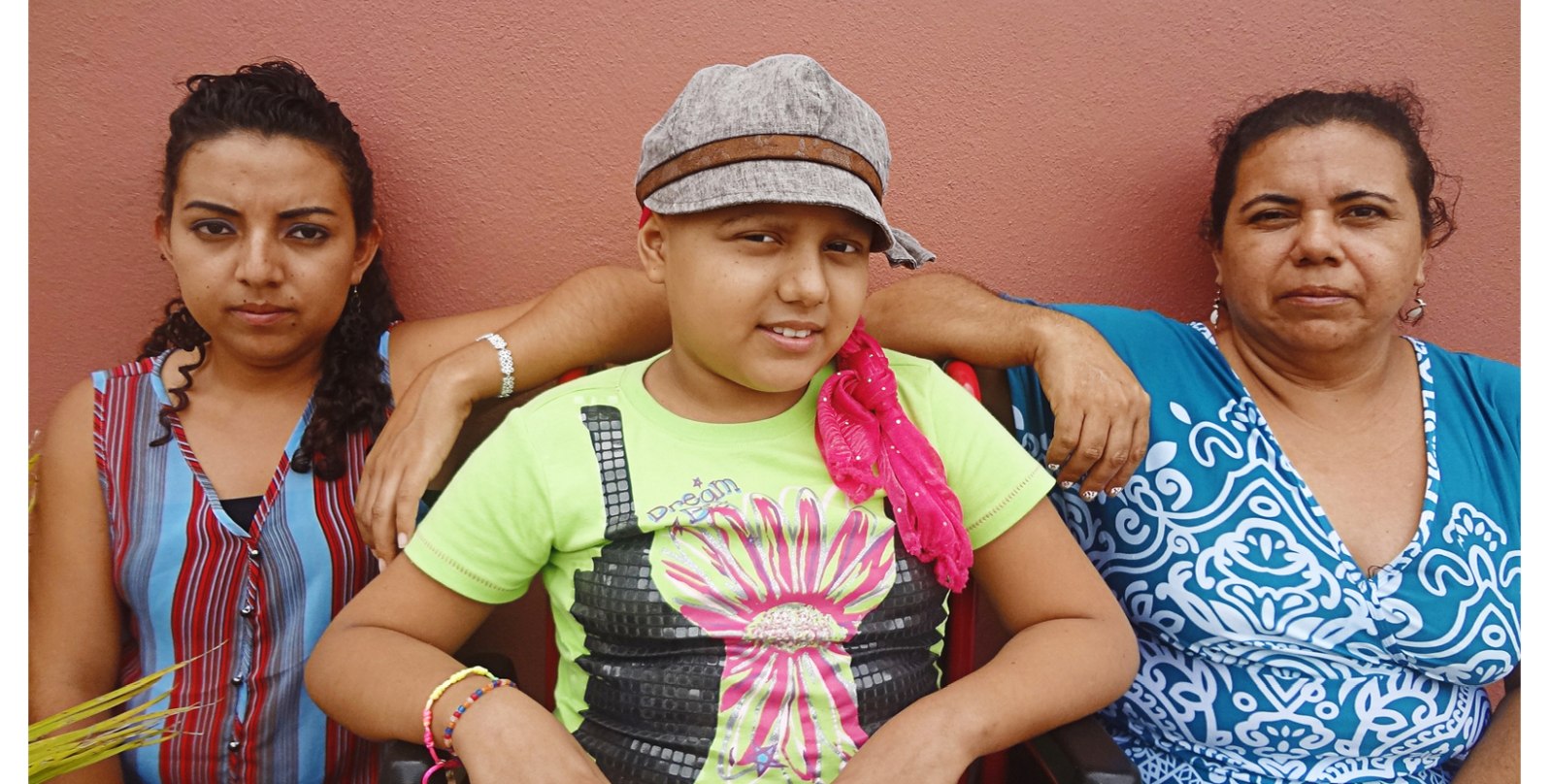
If Melany Sequeira Vallejos’s bone cancer would have been detected in time, her leg may have never had to be amputated. That’s what it boils down to according to her mother, Rosa Vallejos, who is very upset by the statements that Dr. Juanita Gómez gave to this newspaper, in which she states that she “detected” the disease of this 10 year old girl.
In an article published on September 8th with the title, “The real mission of Nosara’s EBAIS,” Gómez also said that people often think an EBAIS is a hospital, but that in fact, for the Social Security Fund (CCSS– Caja Costarricense de Seguro Social), the principal focus is to prevent or detect disease.
But for Rosa Vallejos from Playa Garza, this goal is not met. “She didn’t discover anything; I went to consult her four times and finally she sent me to the hospital in Nicoya. It bothers me that the doctor said that; she never gave us good treatment. It seemed that she was bored of seeing us when we went to consult her, because she once asked, ‘What, you’re here again?’” Vallejos said.
She tells that it all started in February of this year when Melany had pain and inflammation in one of her knees. “Dr. Gómez said it was because she was overweight and due to growth, without sending her to get x-rays or anything. She sent pills that helped with the pain, but the swelling continued; she was telling us that at age 15 it would go away.”
“Having finished the pills, we went back to her examination room and this time she was sent to Nicoya for x-rays, but there we were told they would be in August. After Holy Week (Semana Santa) I took her to the emergency room and the doctor who attended her saw the x-rays and told me the same thing as Dr. Gómez – that it was due to growth – and he gave her more pills,” explained Vallejos.
She said that the weeks passed and that Dr. Gómez sent her daughter to an appointment with the pediatrician at the hospital in Nicoya (Hospital La Anexión). “I went the next day and there was no space; they gave me an appointment for the next week. But the following week my little girl started playing at school and had a fall. I thank God for that, because two days later in an appointment, they took more x-rays and the doctor told me everything looked very bad and that she would have to be hospitalized. Then the orthopedist explained that, from the start, the x-rays showed that it was a tumor, it was osteosarcoma.”
“That April 29th, when the cancer was diagnosed, Melany was sent to the National Children’s Hospital (HNN– Hospital Nacional de Niños). On July 22nd we were told that the leg could not be saved and it was amputated from the knee down, that she came very late” said Vallejos.
An osteosarcoma is a cancerous malignant bone tumor that usually occurs in adolescents when they are growing quickly. It is the most common bone cancer in children and the average age at diagnosis is approximately 15, though it is also common in people over 60.
There is no known cause of this disease, but in some cases it has been shown as hereditary and at least one gene has been associated with increased risk. It can occur in any bone, but usually occurs in the shin near the knee, muscle around the knee, or the arm close to the shoulder.
Dr. Orlando Urroz, Director of HNN, explained to The Voice that, “When one has pain it is never thought to be cancer. Bone tumors have little chance of detection. The symptoms progress quickly with seriousness; it is difficult for clinicians to detect it early. There may be confusion.”
Urroz added that he understands the pain of a mother in seeing her daughter in this situation, “…but the reality is that this type of cancer is very aggressive. This has to be to learned from. A timely diagnosis is difficult, but neither am I making excuses; we must always be alert to any abnormal situation,” said the director.
For her part, Dr. Juanita Gomez, who attended to Melany in Nosara, said that, “…in that article I didn’t even give names; what a shame that the woman was angry because there was no ill intent on my part.”
The “Chemo” Process
After the amputation, chemotherapy was needed to stop the tumor. “At first it was every week, then other week and now every three. Now my girl is hairless; the school bought her a wig. She is vomiting, has no appetite, and is very sad. She was very bookish and loved to play soccer; this has been very difficult. This disease is like a fungus that eats away at bones in this case,” says Vallejos, a housewife and 48-year- old mother of 5 children, adding that they have received great treatment at the HNN, which gives lodging to her or her husband, Carlos Sequeira, when they have to take Melany to the “chemo” in San José, where she is hospitalized for four days.
Indeed, the HNN will give Melany a prosthesis in October, though it will only be temporary to learn how to use it, and then they will have to buy one that costs as much as $5,000 (₵2.5 million), which the Sequeira family budget cannot fund. “We’ll have to do fundraisers or ask for money on the street; we’ll do something,” acknowledged Vallejos.







Comments